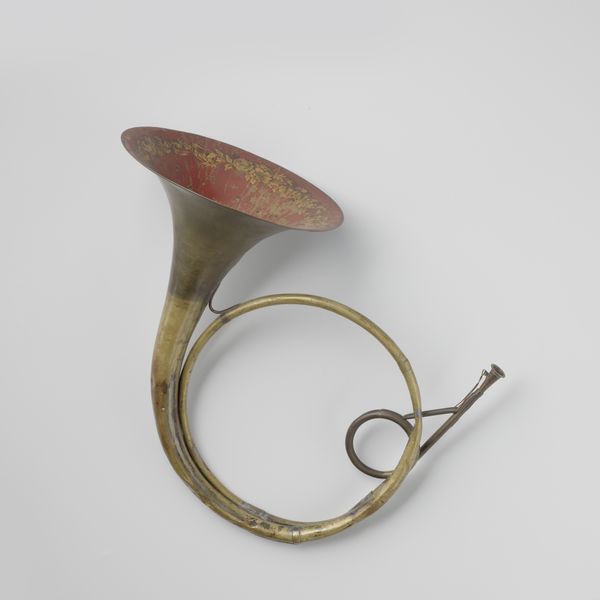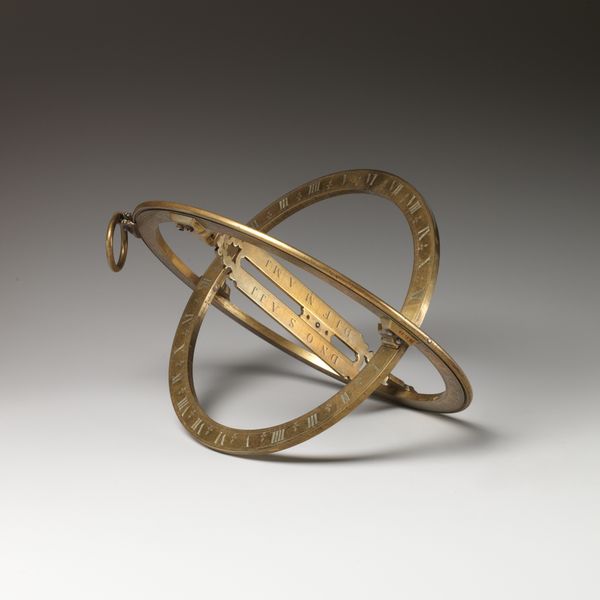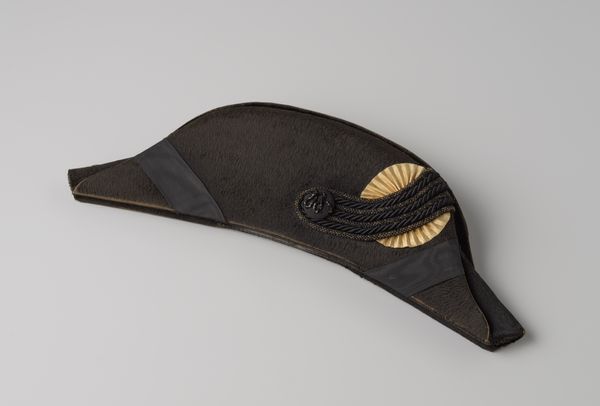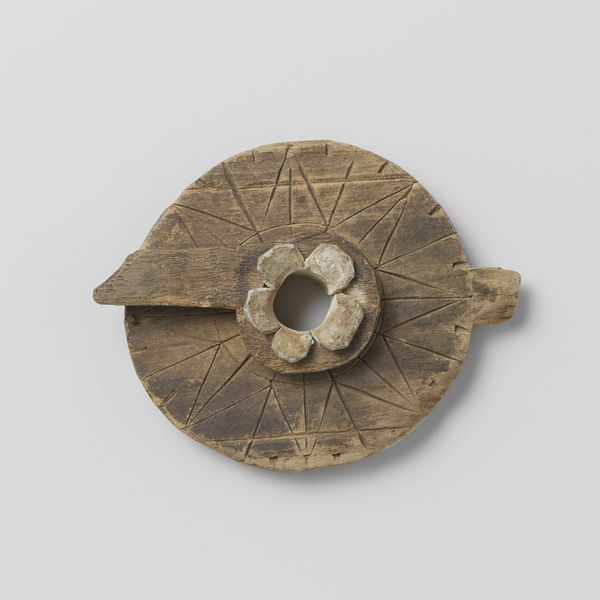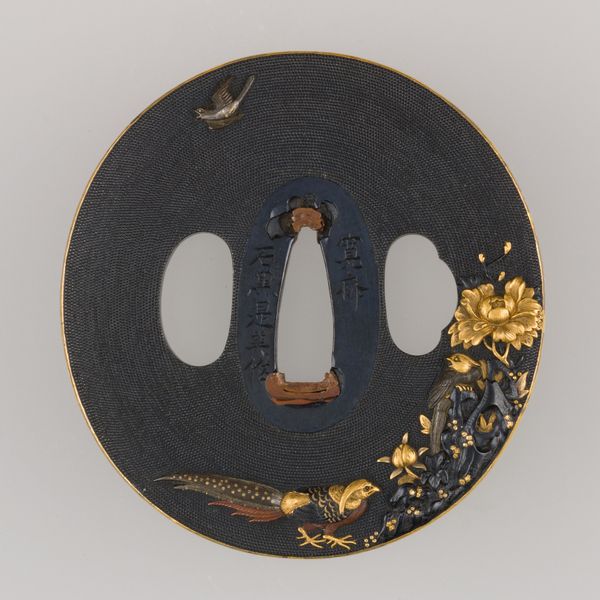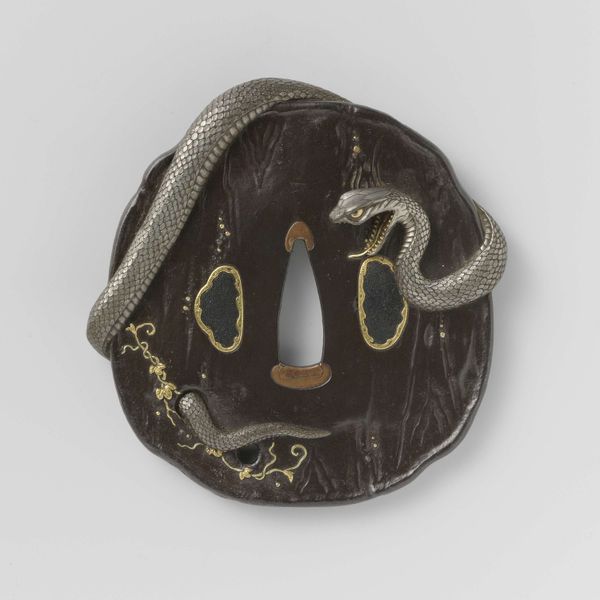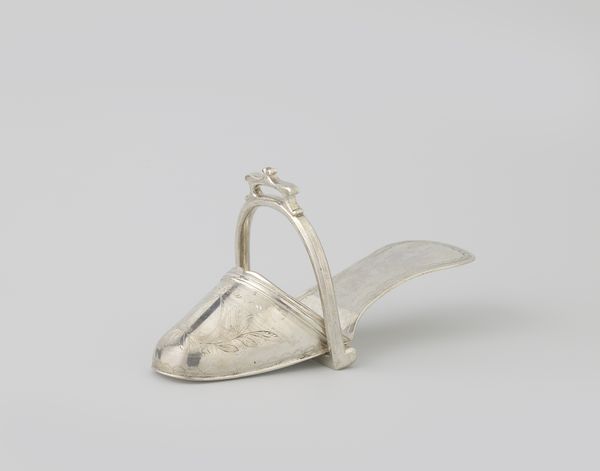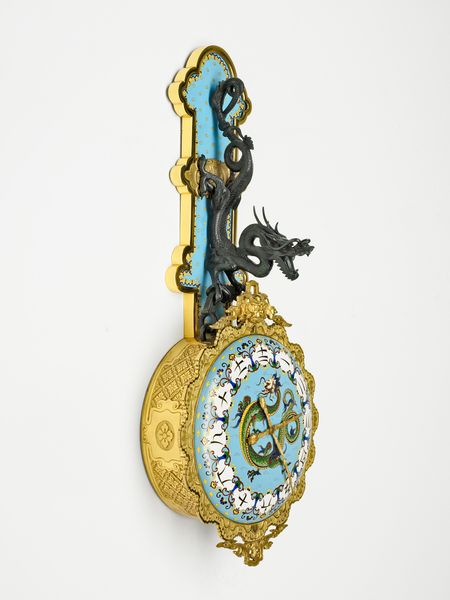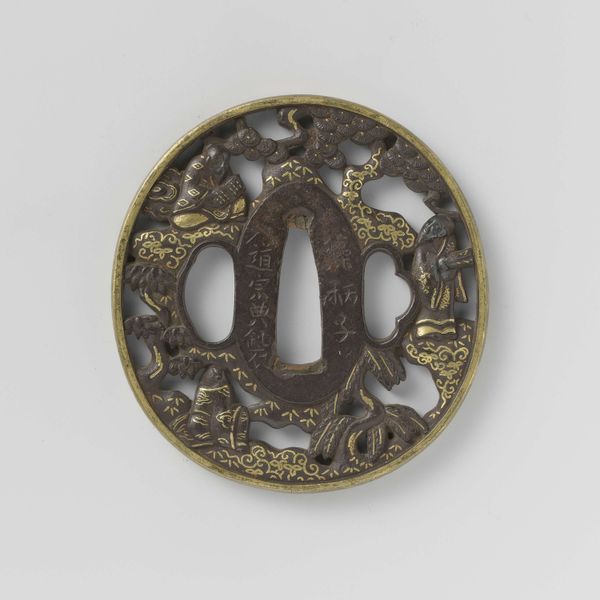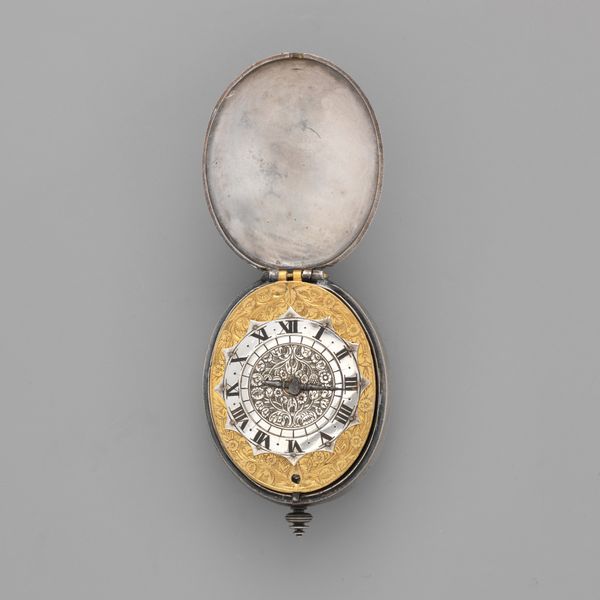
carving, metal
#
carving
#
baroque
#
metal
#
geometric
#
miniature
Dimensions: height 8 cm, width 5.1 cm, thickness 1.2 cm
Copyright: Rijks Museum: Open Domain
Curator: Standing before us is an intriguing piece called "A Multifunctional Timepiece," dating from about 1600 to 1650. It is unsigned and crafted from both metal and carving. Editor: My first thought is how incredibly intricate this is! The size makes the precision involved truly striking. There's a real elegance, despite its almost scientific, mechanical appearance. Curator: Indeed. The use of metal, combined with detailed carving, speaks to a highly skilled workshop and a patron who valued both scientific knowledge and artistic craftsmanship. Considering the era, portable timekeeping devices like these held significant social capital and had a lot to do with colonialism and seafaring. Editor: Absolutely. And within the context of exploration, the notion of "time" becomes inextricably linked to power and control, right? The ability to navigate and chart territories through precise temporal measurements... This isn't just about telling time; it's about mastering spaces and solidifying colonial expansion. This item also highlights global movements within a euro-centric structure. Curator: That’s a critical point. These objects would have required specialists to make them; masters of carving and metalworking in particular. The craftsmanship points to workshops, likely with a clear hierarchy of skilled labor and its specific relation to patronage from aristocratic social tiers and mercantile communities, all fueled by colonial projects. We need to be very specific when attributing praise to innovation and creation in light of the historical reality that allowed it. Editor: And given that it's 'multifunctional,' it probably wasn't intended just for navigational purposes. Perhaps it was used to further demonstrate the patron's expertise, serving a dual function as both tool and signifier of wealth. I wonder if the maker also was regarded in similar status, or instead simply another name absent from our knowledge as is typical for the crafters of the labor. Curator: Good point. The object reflects both technical innovation and status display, a testament to the intertwining of scientific advancement and social hierarchy during the period, while obscuring or erasing altogether the contributions from some in the creation process. Editor: Examining "A Multifunctional Timepiece," reminds me to ask: Whose time were they measuring? What cultures or communities existed outside of the frameworks these tools created? Curator: This brief analysis invites us to explore the means of the object's creation but also question traditional understandings of historical advancement and achievement.
Comments
rijksmuseum about 2 years ago
⋮
Even before the invention of portable clocks, people in the 17th century could tell time already with this pocket instrument. It housed a sundial for use in daytime and on the outside there was a so-called nocturnal. By aligning the little hole in the lid with the Pole Star and rotating the pointer arm to the correct date it was also possible to determine how late it was at night.
Join the conversation
Join millions of artists and users on Artera today and experience the ultimate creative platform.

